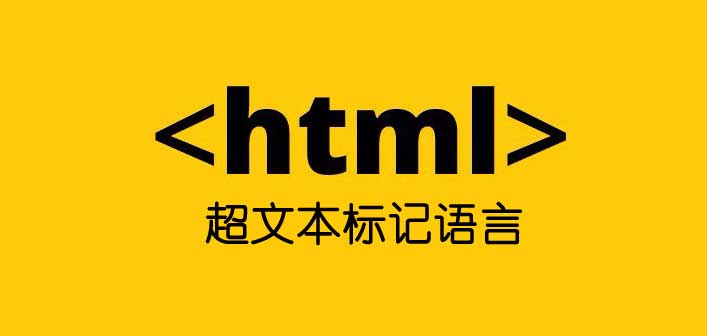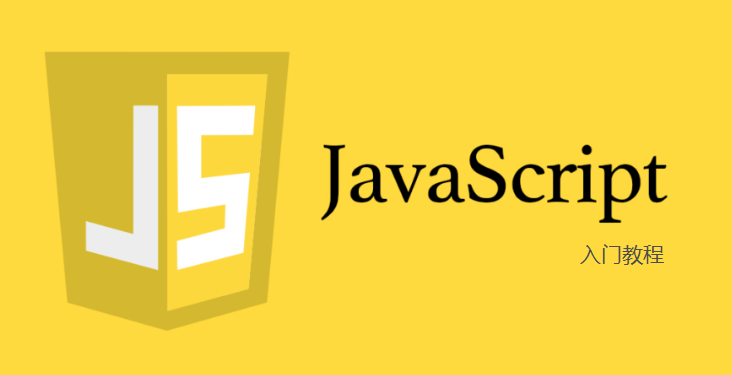vue 快速入门 系列 —— Vue(自身) 项目结构
其他章节请看:
vue 快速入门 系列
Vue(自身) 项目结构
前面我们已经陆续研究了 vue 的核心原理:数据侦测、模板和虚拟 DOM,都是偏底层的。本篇将和大家一起来看一下 vue 自身这个项目,了解它的目录结构,以及构建过程。
vue 的目录结构
将 vue 项目 下载到本地 git clone git@域名:vuejs/域名 域名
- 域名
- dist // 构建后的文件
- examples // 有几个用 vue 写的示例,直接是通过 <script> 方式。例如有经典的 todo,还有 markdown
- flow // flow 相关。flow 是 JAVASCRIPT 的静态类型检查器
- packages // 这 4 个包在 npm 中都能搜索到
- vue-server-renderer
- vue-template-compiler
- weex-template-compiler
- weex-vue-framework
- scripts // 构建相关的脚本和配置文件。还有 gitHooks
- src
- compiler // 编译器。与模板编译相关的代码,例如解析器、优化器、生成器等。从 core 中分离出来或许是因为有的版本不需要它。
- core // vue 的核心代码
- components // 有 keep-alive 组件
- global-api // 全局 api 的代码。例如 域名
- instance // vue 的构造函数和实例方法。例如 域名otype.$set
- observer // 侦测数据变化相关代码
- util // 工具相关。例如 域名、域名、next-域名
- vdom // 虚拟 dom
- platforms // 平台相关
- web
- weex // 阿里巴巴发起的跨平台用户界面开发框架
- sfc // 将单文件组件 (*.vue) 文件解析为 SFC 描述符对象
- 域名
- shared // 公用的工具代码。在 vscode 中搜索 `shared/`,可发现有 76 个文件引用了它
- 域名 // 工具模块
- test // 测试相关
- types // TypeScript 相关
Tip: flow 和 githooks 就不节外生枝了
构建版本
dist 目录下有很多版本的 vue,我们需要了解一下它们的差异。
完整版:有 域名、域名、域名等。
运行时版本:包含 runtime 的,例如 域名、域名.js、域名域名。
完整版包括运行时和编译器,而运行时基本上就是完整版除去编译器的其它一切。
Tip:编译器,用来将模板字符串编译成为 JavaScript 渲染函数的代码。在 模板 一文中已介绍。
// 需要编译器
new Vue({
template: \'<div>{{ hi }}</div>\'
})
// 不需要编译器
new Vue({
render (h) {
return h(\'div\', 域名)
}
})
UMD版本:umd 版本的文件通过 <script> 标签直接在浏览器中使用。有域名、域名、域名、域名.js
CommonJS 版本:包含 common 的,例如 域名、域名域名。主要给旧的打包工具使用,入 webpack 1。
ES Module 版本:包含 esm 的,例如 域名、域名.js。主要配合新(或现代)的打包工具,比如 webpack 2 或 Rollup。
Tip:有关构建版本更详细的介绍请看 官网
使用 vue 的哪个版本(import \'vue\')
现代打包工具,通过 import 或 require 引入 vue,使用的都是 域名.js。
为什么是这样?请看实验。
准备一个项目,有 webpack,通过 npm 安装 vue,最后能打包就好了。
Tip:webpack 的简单使用可以看 初步认识 webpack
在 域名 中就写一行代码:
import \'vue\'
然后构建生成 域名:
test-project> npx webpack --mode development
Hash: e9412c758fa785a2fd70
Version: webpack 域名.0
Time: 289ms
Built at: 2022/01/16 上午9:55:41
Asset Size Chunks Chunk Names
域名 250 KiB main [emitted] main
Entrypoint main = 域名
[./node_modules/webpack/buildin/域名] (webpack)/buildin/域名 472 bytes {main} [built]
[./src/域名] 12 bytes {main} [built]
+ 4 hidden modules
// 域名
...
"use strict";
eval("__webpack_require__.r(__webpack_exports__);\n/* harmony import */ var vue__WEBPACK_IMPORTED_MODULE_0__ = __webpack_require__(/*! vue */ \"./node_modules/vue/dist/域名.js\");\n\n\n//# sourceURL=webpack:///./src/域名?");
我们在域名 中发现 域名.js。
如果改为 require(\'vue\'),仍然是 域名.js。
eval("__webpack_require__(/*! vue */ \"./node_modules/vue/dist/域名.js\")\n\n//# sourceURL=webpack:///./src/域名?");
如果我们删除 vue 中 域名 的一行代码,再次打包:
// node_modules/vue/域名
{
"name": "vue",
"version": "域名",
"description": "Reactive, component-oriented view layer for modern web interfaces.",
"main": "dist/域名域名",
- "module": "dist/域名.js",
会发现 域名 中引入的变成 域名域名
eval("__webpack_require__(/*! vue */ \"./node_modules/vue/dist/域名域名\")\n\n//# sourceURL=webpack:///./src/域名?");
注:在 vue-cli 的项目中,即使只删除 "module": "dist/域名.js",,使用 vue 版本也不会变成 域名域名。
构建分析
dist 目录下有很多版本的 vue。每次运行 npm run build 就会重新生成一遍:
域名> npm run build
> vue@域名 build
> node scripts/域名
dist\域名域名 域名
dist\域名域名 域名 (gzipped: 域名)
dist\域名.js 域名
dist\域名.js 域名 (gzipped: 域名)
dist\域名.js 域名
dist\域名 域名
dist\域名域名 域名
dist\域名域名 域名 (gzipped: 域名)
dist\域名 域名
dist\域名.js 域名 (gzipped: 域名)
dist\域名 域名
dist\域名 域名 (gzipped: 域名)
packages\vue-template-compiler\域名 域名
packages\vue-template-compiler\域名 域名
packages\vue-server-renderer\域名 域名
packages\vue-server-renderer\域名 域名 (gzipped: 域名)
packages\vue-server-renderer\域名 域名
packages\vue-server-renderer\server-域名 域名
packages\vue-server-renderer\client-域名 域名
Tip:npm run build 来自 域名,运行前需要安装依赖 npm i。
只生成 域名.js
如何让 npm run build 只生成 域名.js 这一个文件?我们先分析:
首先,运行 npm run build 就是运行 node scripts/域名,也就是执行 域名/scripts/域名 这个文件。
如果我们将这个文件内容替换成 域名(\'i am 域名\'),再次编译,发现什么事都不会去做,仅仅输出 i am 域名:
域名> npm run build
> vue@域名 build
> node scripts/域名
i am 域名
于是我们知道应该从 域名 入手。核心代码如下:
// 域名
// 现代构建工具
const rollup = require(\'rollup\')
let builds = require(\'./config\').getAllBuilds()
// 构建
build(builds)
里面提到 域名 的 getAllBuilds 方法:
域名llBuilds = () => 域名(builds).map(genConfig)
最后定位到 builds 变量:
const builds = {
...
// Runtime only ES modules build (for bundlers)
\'web-runtime-esm\': {
entry: resolve(\'web/entry-域名\'),
dest: resolve(\'dist/域名.js\'),
format: \'es\',
banner
},
// Runtime+compiler development build (Browser)
\'web-full-dev\': {
entry: resolve(\'web/entry-runtime-with-域名\'),
dest: resolve(\'dist/域名\'),
format: \'umd\',
env: \'development\',
alias: { he: \'./entity-decoder\' },
banner
},
...
}
修改 builds 并重新打包:
// 只保留一个
const builds = {
// Runtime only ES modules build (for bundlers)
\'web-runtime-esm\': {
entry: resolve(\'web/entry-域名\'),
dest: resolve(\'dist/域名.js\'),
format: \'es\',
banner
}
}
域名> npm run build
> vue@域名 build
> node scripts/域名
dist\域名.js 域名
至此,每次编译,则只会生成一个文件。
构建 域名.js 的过程
web/entry-域名
从下面这段代码,我们猜测 域名.js 的入口是 web/entry-域名:
\'web-runtime-esm\': {
entry: resolve(\'web/entry-域名\'),
dest: resolve(\'dist/域名.js\'),
format: \'es\',
banner
}
// 域名/src/platforms/web/entry-域名 全部内容:
/* @flow */
import Vue from \'./runtime/index\'
export default Vue
替换 entry-域名 的内容如下,重新构建:
// entry-域名
const Vue = function () { }
export default Vue
域名> npm run build
> vue@域名 build
> node scripts/域名
dist\域名.js 域名
// dist/域名.js 全部内容:
/*!
* 域名 域名
* (c) 2014-2022 Evan You
* Released under the MIT License.
*/
var Vue = function () { };
export default Vue;
根据打包后的内容,说明 web/entry-域名 确实就是入口。
runtime/index
根据上文的分析,我们已知晓 域名.js 的构建的过程就是在 runtime/index 中定义的。以下是与 Vue 相关的代码:
// 域名/src/platforms/web/runtime/域名
/* @flow */
import Vue from \'core/index\'
// install platform specific utils
// 安装平台特定的工具
域名UseProp = mustUseProp
域名servedTag = isReservedTag
域名servedAttr = isReservedAttr
域名agNamespace = getTagNamespace
域名knownElement = isUnknownElement
// install platform runtime directives & components
extend(域名ctives, platformDirectives)
extend(域名onents, platformComponents)
// install platform patch function
域名tch__ = inBrowser ? patch : noop
// public mount method
域名otype.$mount = function (
el?: string | Element,
hydrating?: boolean
): Component {
el = el && inBrowser ? query(el) : undefined
return mountComponent(this, el, hydrating)
}
export default Vue
关键代码就是第一行 import Vue from \'core/index\',也即是引入 vue 的核心代码。
core/index
// 域名/src/core/域名 全部代码:
// 返回 Vue 构造函数,并准备好实例方法
import Vue from \'./instance/index\'
import { initGlobalAPI } from \'./global-api/index\'
import { isServerRendering } from \'core/util/env\'
import { FunctionalRenderContext } from \'core/vdom/create-functional-component\'
// 初始化全局 api
initGlobalAPI(Vue)
域名neProperty(域名otype, \'$isServer\', {
get: isServerRendering
})
域名neProperty(域名otype, \'$ssrContext\', {
get () {
/* istanbul ignore next */
return this.$vnode && this.$域名ontext
}
})
// expose FunctionalRenderContext for ssr runtime helper installation
域名neProperty(Vue, \'FunctionalRenderContext\', {
value: FunctionalRenderContext
})
域名ion = \'__VERSION__\'
export default Vue
关键代码是 instance/index(构造函数和实例方法) 和 global-api/index(全局方法):
// 域名/src/core/instance/域名 全部代码:
import { initMixin } from \'./init\'
import { stateMixin } from \'./state\'
import { renderMixin } from \'./render\'
import { eventsMixin } from \'./events\'
import { lifecycleMixin } from \'./lifecycle\'
import { warn } from \'../util/index\'
// 构造函数
function Vue (options) {
if (域名_ENV !== \'production\' &&
!(this instanceof Vue)
) {
warn(\'Vue is a constructor and should be called with the `new` keyword\')
}
域名t(options)
}
initMixin(Vue)
// 状态相关
stateMixin(Vue)
// 事件相关
eventsMixin(Vue)
// 生命周期相关
lifecycleMixin(Vue)
renderMixin(Vue)
export default Vue
// 域名/src/core/global-api/域名
/* @flow */
import config from \'../config\'
import { initUse } from \'./use\'
import { initMixin } from \'./mixin\'
import { initExtend } from \'./extend\'
import { initAssetRegisters } from \'./assets\'
import { set, del } from \'../observer/index\'
import { ASSET_TYPES } from \'shared/constants\'
import builtInComponents from \'../components/index\'
import { observe } from \'core/observer/index\'
import {
warn,
extend,
nextTick,
mergeOptions,
defineReactive
} from \'../util/index\'
// 初始化全局 api
export function initGlobalAPI (Vue: GlobalAPI) {
// config
const configDef = {}
域名 = () => config
if (域名_ENV !== \'production\') {
域名 = () => {
warn(
\'Do not replace the 域名ig object, set individual fields instead.\'
)
}
}
域名neProperty(Vue, \'config\', configDef)
// exposed util methods.
// NOTE: these are not considered part of the public API - avoid relying on
// them unless you are aware of the risk.
域名 = {
warn,
extend,
mergeOptions,
defineReactive
}
// 定义全局 api:set、delete、nextTick...
域名 = set
域名te = del
域名Tick = nextTick
// 2.6 explicit observable API
域名rvable = <T>(obj: T): T => {
observe(obj)
return obj
}
域名ons = 域名te(null)
域名ach(type => {
域名ons[type + \'s\'] = 域名te(null)
})
// this is used to identify the "base" constructor to extend all plain-object
// components with in Weex\'s multi-instance scenarios.
域名e = Vue
extend(域名onents, builtInComponents)
initUse(Vue)
initMixin(Vue)
initExtend(Vue)
initAssetRegisters(Vue)
}
其他章节请看:
vue 快速入门 系列

















